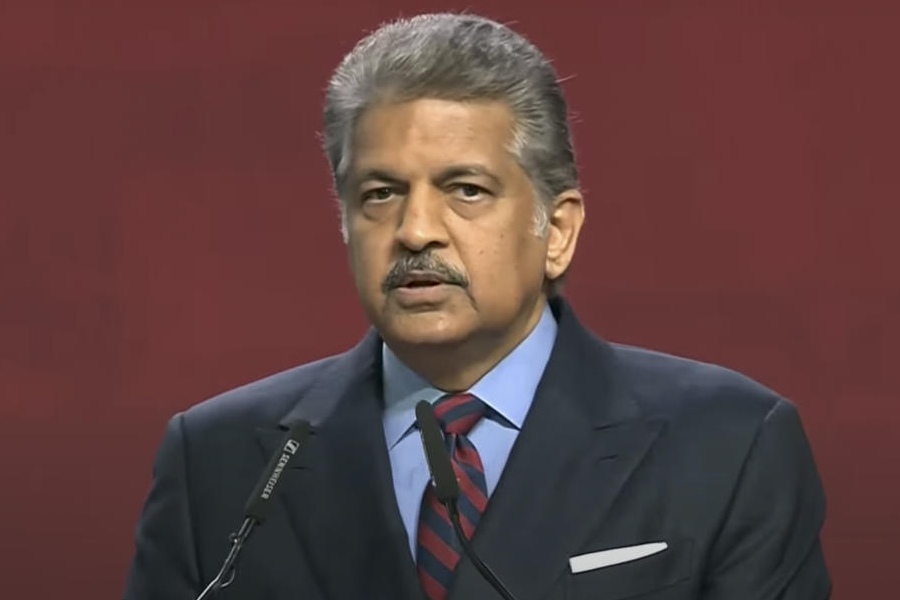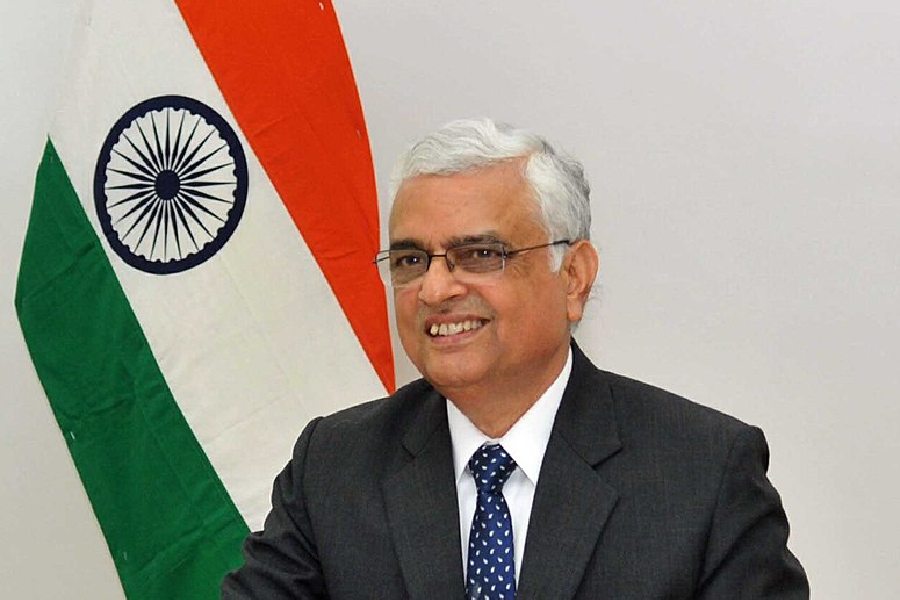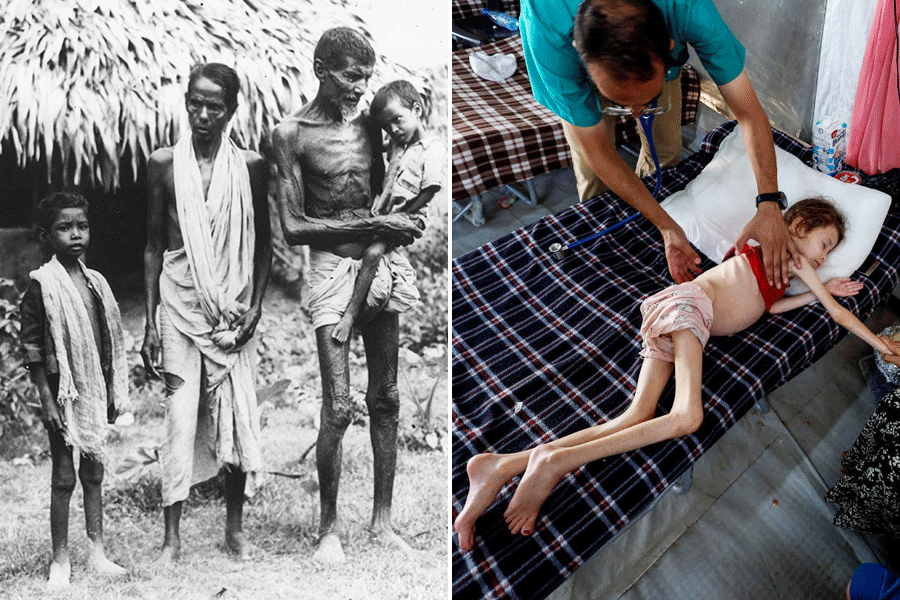 |
There was a time when doctors were dedicated, medicines were simple and hospitals were no horror chambers, recounts Samir Mukerjee
During my childhood and adolescence, Calcutta was very proud of its general physicians who had impeccable bedside manners and spent a lot of time comforting their patients. At that time there wasn’t this obsession with pathological tests. From the symptoms that they observed in their patients they came to sound diagnostic conclusions.
In those days, the doctors prescribed simple medicines like mixtures that the chemists would brew up. They also made out a diet chart that had to be rigorously followed by the patient. I remember having “pau roti and machher jhol” for lunch till the fever persisted. Rice was introduced after the temperature became normal. For our afternoon teas, it used to be sponge fingers from Flury’s. At dinner time it was normally chicken broth soup followed by red jelly and custard or cream caramel pudding. A sick room diet wasn’t meant to crush my spirits.
Capt. S.C. Chatterjee, founder of Park Nursing Home, looked after me from the time I was born. How well I remember the faint aura of cologne that heralded his approach and his habitually smiling face. He was always dressed so well and spent a long time with me trying to figure out how he could provide relief and comfort. The moment he started feeling my pulse, I began to feel better as if I knew he wouldn’t fail me.
The Park Nursing Home is one of those institutions which is embedded in our subconscious. It has been with us for so long that it has acquired a sort of permanence in our minds. It was founded in the year 1934 by Captain Sushil Chatterjee and was situated at 83, Park Street. In December 1937, it was shifted to 4, Victoria Terrace, where it became a well-known landmark. That’s where it dug its heels in and spread its wings.
The Park had an enviable reputation for personalised service and care. For all practical purposes, it was home away from home. Captain Chatterjee’s wife, Bulbul Chatterjee, nurtured the institution with all the warmth she could summon up. In her time, the meals served to the patients were immaculate. They couldn’t praise them enough and I’ve heard people telling me that their stay at the Park was always rewarding because of the excellent cuisine. There was such perfect supervision that the staff never put a foot wrong and the patients glowed with satisfaction. The nurses were warm and caring and a friendly ambience helped the patients recover fast.
It might interest people to know that one of the first patients to arrive at the Park, when it had begun functioning at Victoria Terrace, was Sarat Chandra Chatterjee, whose books had such an extraordinary appeal. He was desperately ill and was admitted to the nursing home under the care of Dr Bidhan Chandra Roy and Dr Kumud Shankar Ray. He came to this nursing home essentially because he refused to go to the other institutions run by the British. That is where he breathed his last after being operated upon by Dr Lalit Banerjee for cancer, which was in an advanced stage.
The Park Nursing Home steadily advanced and within a few years more beds became necessary and the owners built a structure on the roof of the single-storeyed building and later on another structure was built on Victoria Terrace in front of the main building.
The Park treated its staff so well that they remained there as long as they could. One of the clerks, Bimal Chakravarty, who was recruited in the earlier days, still retains his position as a pillar of the organisation. Sister Louise Harrison was an able matron of the nursing home for many years and along with Bulbul Chatterjee, they ran the nursing home on well-oiled wheels.
On August 15, 1947, the last British Governor of Bengal, Frederick Burrows and his wife officially visited the institution, as mentioned in The Statesman. Many famous people from different walks of life were treated at this nursing home. A niece of Pandit Nehru underwent a major operation here in 1944 and it is reported that Indira Gandhi spent a night here at about the same time, under a pseudonym. In the mid-1960s, the Park Nursing Home was transformed as a centre for paediatric surgery and the Park Children Centre was born. This was the time when a laboratory service and an X-ray service were also set up. In recent years, the nursing home went through another transformation and expansion. Today, under the stewardship of Dr Subir Chatterjee and his sons, Sudip and Sandip, the Park Clinic is poised to face the future with oodles of confidence.
During this period, there were two other well-known nursing homes — the Elgin and the Riordon — that catered mainly to the British officers and their families from mercantile companies. The corporate organisations were linked to the East India Clinic that ran these two nursing homes. They had a very exclusive character and were probably rather fastidious about whom they admitted. I believe there was an awful lot of strictness in the way the nursing homes were maintained and any kind of slackness was just not permitted. They had English matrons and Anglo-Indian nurses who have always been models of efficiency and discipline. In due course these two nursing homes ceased to function as they amalgamated to form Woodlands Nursing Home in Alipore, where the old tradition and standards remained in place for quite a while under matron Livingstone.
I grew up in times when professionals had not been smutted with greed and the Hippocratic Oath that the doctors observed naturally meant the right emphasis on ethical behaviour. After Capt. S. C. Chatterjee, I encountered Dr P.K. Roy Chowdhury as the house physician. He often spoke of his apprenticeship under Dr Sir Nil Ratan Sircar. Dr Anil Kumar Roy was a redoubtable surgeon physician and had no time for frivolous socialising. At the time of my birth, mother was seriously ill but her gynaecologist, Col. Green Armitage, chose a special nurse to give her the necessary instructions. Would such solicitude be imaginable today?











